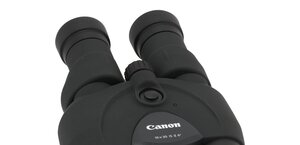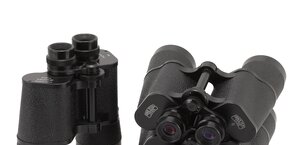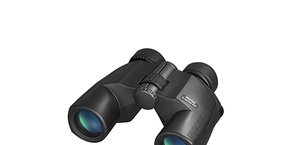All you want to know about binoculars but you are ashamed of asking
2. Basic parameters
The magnification is just description of how many times, the object observed through binoculars, seems to be bigger than observed by naked eye. Lens or objective diameter is just diameter of glass (lens) which gather the light. It’s usually given in millimetres. Both this parameters are important because are usually shown on binoculars as a pair e.g. 7x50 or 20x60. The first instrument magnify 7 times and its lens has 50 millimetres diameter. The second magnify 20 times and its lens has 60 millimetres diameter.
Another important parameter is eye relief. This quantity describe the maximum possible distance between eye and eyepiece (ocular) without wasting any area in field of view. Of course the longer it is, the better binoculars are. It is important especially for people suffering from optical aberration called astigmatism. Those people shouldn’t take off their glasses while looking through binoculars. But glasses cause impossibility to keep eyes sticking with binocular eyepiece. So if the distance is short, those people are unable to see the entire field of view in binoculars.
Please Support UsIf you enjoy our reviews and articles, and you want us to continue our work please, support our website by donating through PayPal. The funds are going to be used for paying our editorial team, renting servers, and equipping our testing studio; only that way we will be able to continue providing you interesting content for free. |
- - - - - - - - - - - - - - - - - - - - - - - - - - - - - - - - - - - - - - - - - - - - - - - -
Fourth important parameter is field of view telling us how big part of field the binoculars project in our eyes. It can be shown in angle degrees or in meters. Conversation rate from angular degree into meters is very simple. Only need to calculate tangent of given degree which is:
Decimal fraction 0.114 is so called linear field of view which equals to ‘’114 meters per 1000 meters".
Also important is the fact that general binocular field of view depends on an apparent eyepieces field of view. To obtain the general field of view you have to multiply eyepiece field of view by binoculars magnification. Typical eyepieces field of view is 50-60 degrees and thus binoculars with 10x magnification obtain 5-6 degree field of view and binoculars with 8x magnification 6-8 degree field of view. Of course in more expensive binoculars, eyepieces are constructed in more complicated way so its field of view can obtain even 60-70 degrees which bear fruits as a very large global field of view.
Other terms (except exit pupil) are actually repeated because they don’t tell us anything new relating to information given above but we’re going to briefly discuss this terms because of reviewer duty.
Exit pupil gives us information how big is a disc of light produced by the eyepiece and entering our eye. It can be easily measured but simpler is to divide objective diameter by magnification. So exit pupil in 10x50 binoculars will be 5mm, and in 8x56 will be 7mm. Although it is repeated parameter (we can calculate it knowing lens diameter and magnification) it is very important so we are going to write something more about it later.
Relative brightness is nothing else but squared size of exit pupil given in millimetres. So relative brightness of given above examples will be in turn 25 and 49. Of course this parameter doesn’t give anything new in compare to exit pupil.
The twilight factor is found by multiplying the size of the objective lens by the magnification and then calculating the square root of that result. For example twilight factor of 12x60 binoculars equals 26.8






